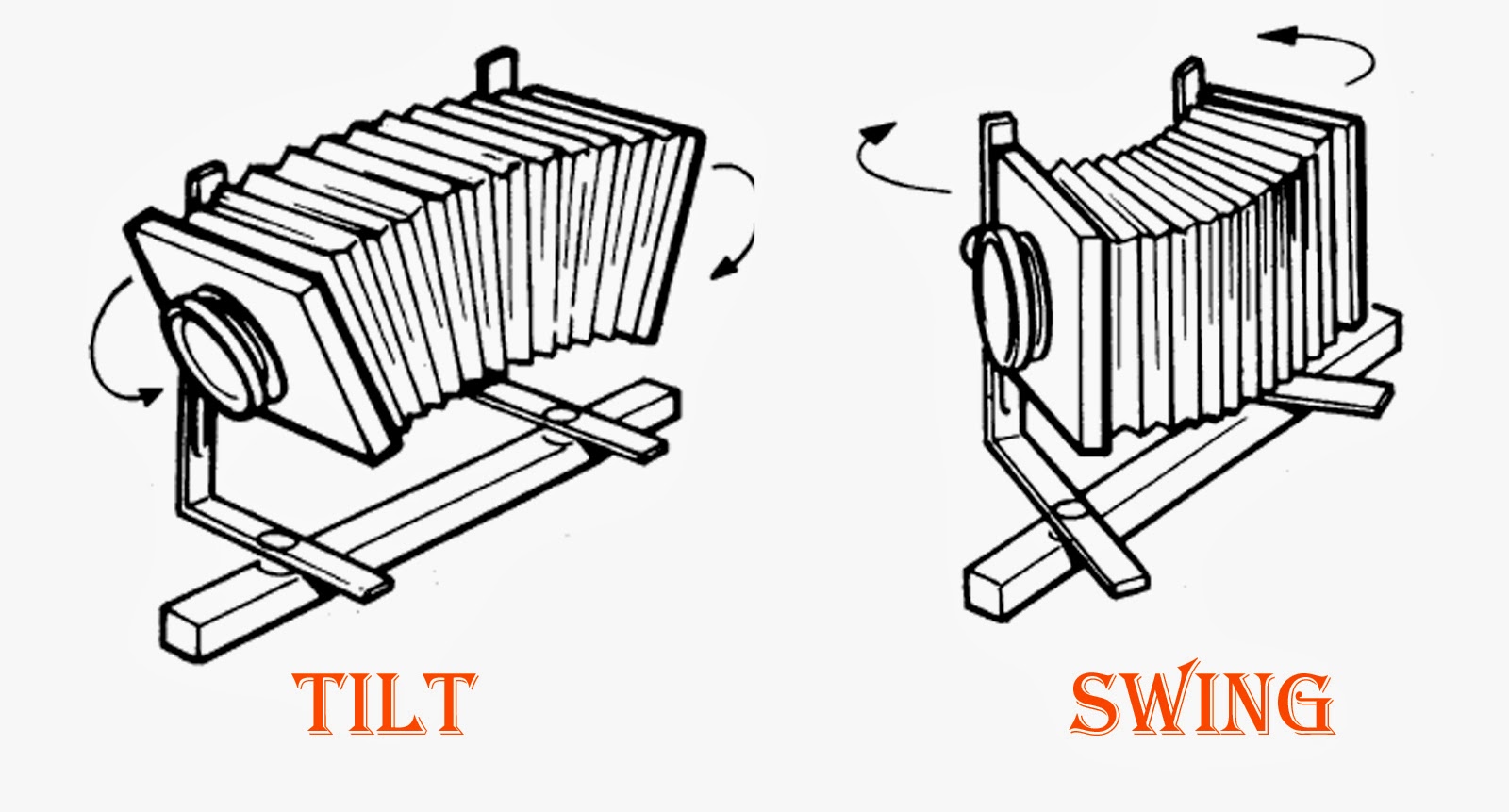
View Camera Movements -Swing Tilt
Swing - Tilt: Controlling Focus and Depth of Field
A lens can only focus sharply on one plane at a time. When a view camera is set up with both front and rear standards in their normal or zero positions, for example, the plane of sharp focus is a plane in space that is exactly parallel to them.
Tilting and/or swinging the plane of the lens repositions the plane of sharp focus within a scene—the shape of the subject does not change.
Any angular movement of the back standard also alters the shape of the subject.
Tilt can be used to extend the plane of focus on the horizontal plane extending from close-up to far-away in front of the camera - examples are table-top arrangements or landscapes.__________________________________________________________
Detailed Guide to Camera Movements
Focal Length information
Film Holders video
Fill out the Evaluation Form for every shoot.
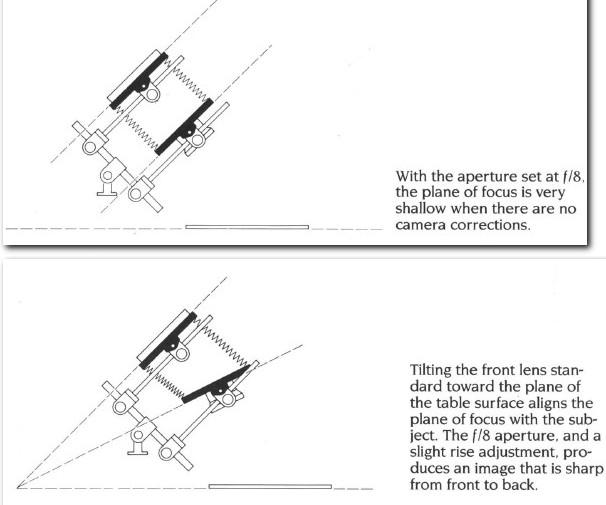
Expose AT LEAST 4 sheets of film and develop them before class on Tuesday
1) Find subjects with strong flat horizontal components that you can look down on-
2) Place the camera to frame the subject on a flat plane (table) (landscape)
3) Tilt the camera to compose the subject with no movements, focus on foreground object
4) Use your digital camera to shoot your subject from the same camera position, zoom to match the same framing.
5) check the digital image to see if the lighting, exposure and subject matter looks the way you want.
6) Meter the subject, use the Quick Disc to determine if you need to compensate for bellows extension.
7) Use the front standard in a tilt to sharpen the plane of focus - (you might have to use rise-fall to recompose) Expose the Film
8) Repeat this with a vertical subject that extends away from the camera (like a wall)
Use the Front Standard SWING for a similar effect as the tilt.
8) Develop, Proof, Print- develop your film , make proof sheet, make one fine print for display on the hallway wall.
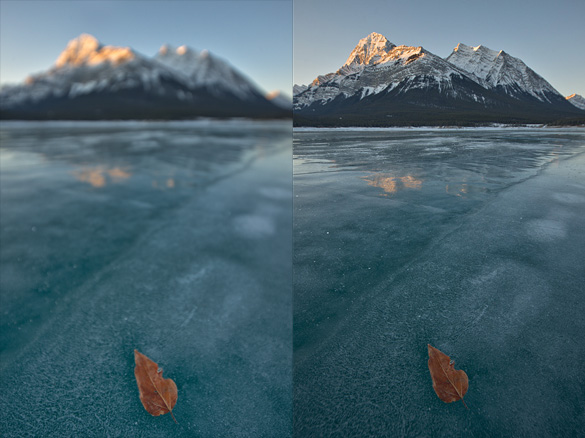
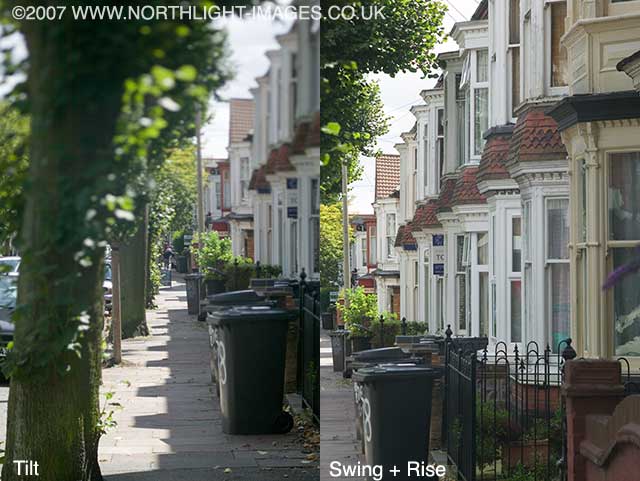
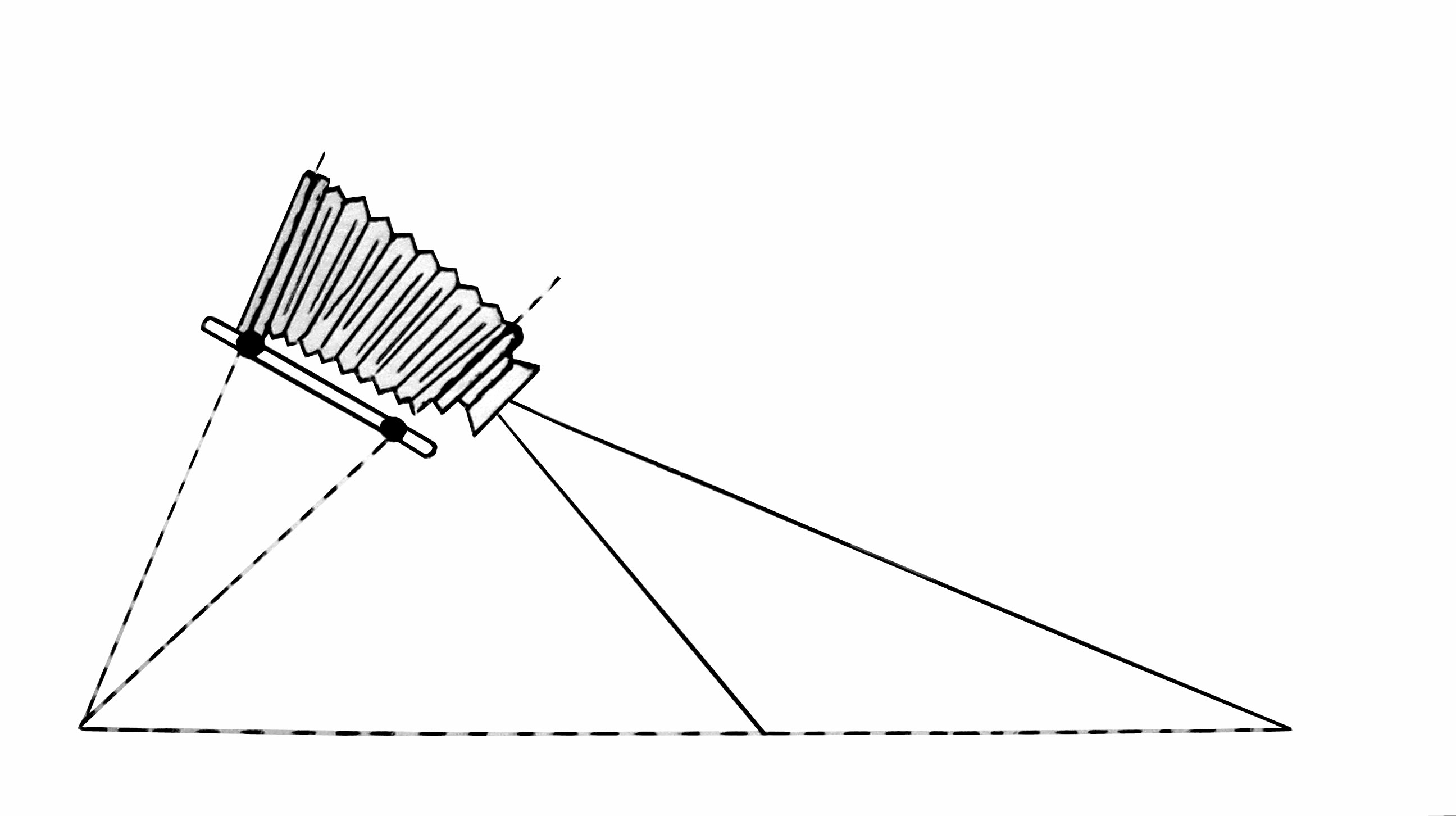
shoot with digital camera or phone for each new setup
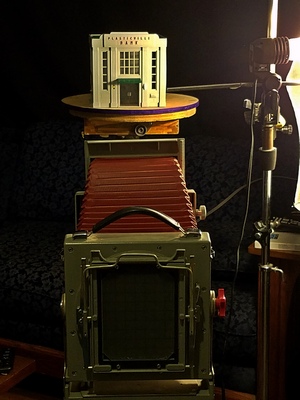
Shoot from behind the camera showing the camera and the subject
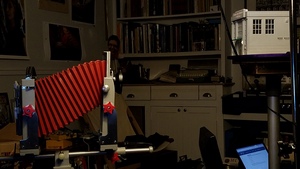
Shoot from angle to show camera setup and subject
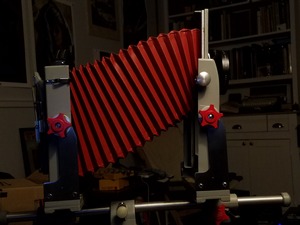
Close photo showing the camera movements

shoot from as close to the lens as possible. Zoom to capture the view as close to what the camera sees.